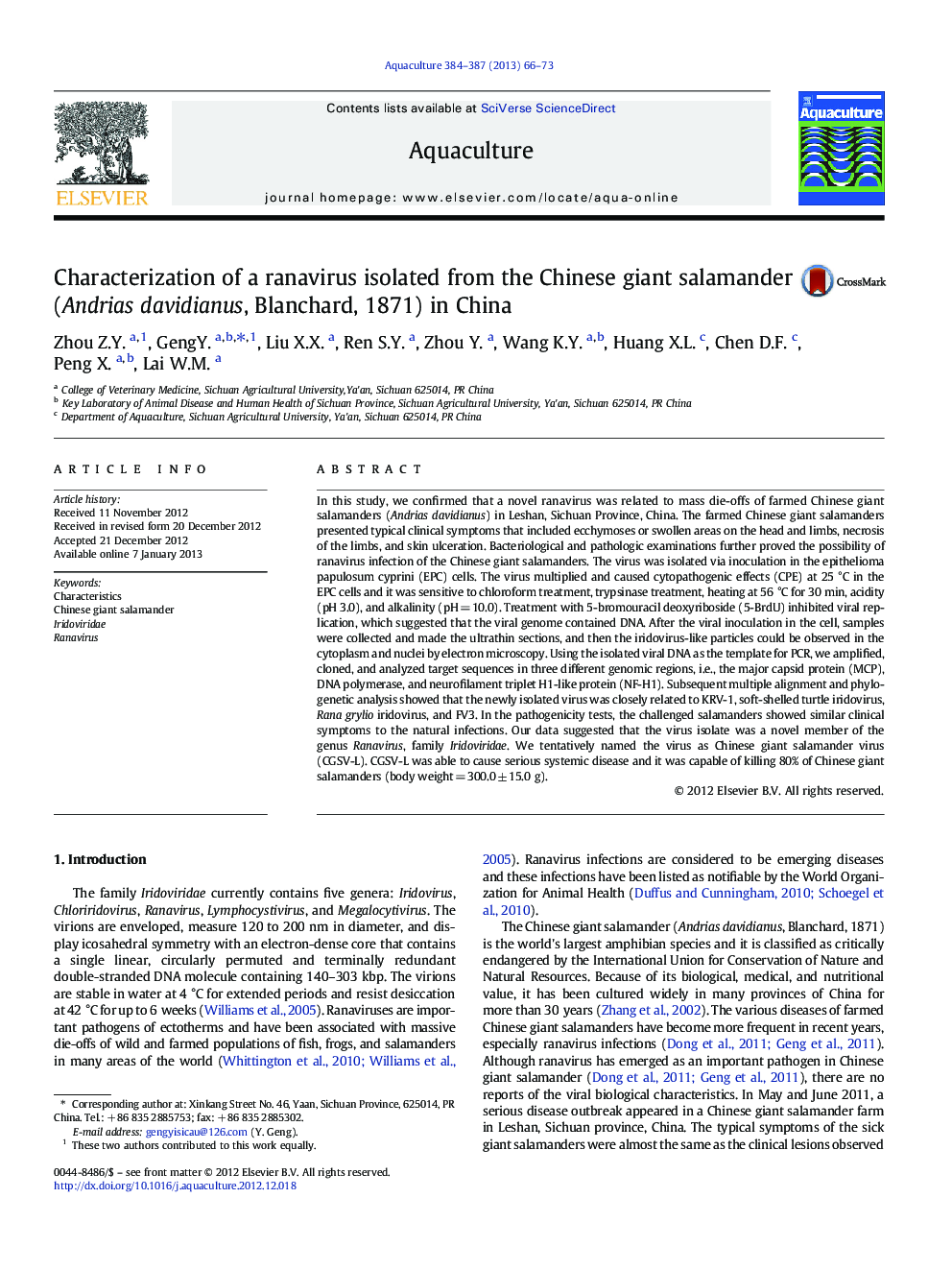| کد مقاله | کد نشریه | سال انتشار | مقاله انگلیسی | نسخه تمام متن |
|---|---|---|---|---|
| 2422202 | 1552877 | 2013 | 8 صفحه PDF | دانلود رایگان |

In this study, we confirmed that a novel ranavirus was related to mass die-offs of farmed Chinese giant salamanders (Andrias davidianus) in Leshan, Sichuan Province, China. The farmed Chinese giant salamanders presented typical clinical symptoms that included ecchymoses or swollen areas on the head and limbs, necrosis of the limbs, and skin ulceration. Bacteriological and pathologic examinations further proved the possibility of ranavirus infection of the Chinese giant salamanders. The virus was isolated via inoculation in the epithelioma papulosum cyprini (EPC) cells. The virus multiplied and caused cytopathogenic effects (CPE) at 25 °C in the EPC cells and it was sensitive to chloroform treatment, trypsinase treatment, heating at 56 °C for 30 min, acidity (pH 3.0), and alkalinity (pH = 10.0). Treatment with 5-bromouracil deoxyriboside (5-BrdU) inhibited viral replication, which suggested that the viral genome contained DNA. After the viral inoculation in the cell, samples were collected and made the ultrathin sections, and then the iridovirus-like particles could be observed in the cytoplasm and nuclei by electron microscopy. Using the isolated viral DNA as the template for PCR, we amplified, cloned, and analyzed target sequences in three different genomic regions, i.e., the major capsid protein (MCP), DNA polymerase, and neurofilament triplet H1-like protein (NF-H1). Subsequent multiple alignment and phylogenetic analysis showed that the newly isolated virus was closely related to KRV-1, soft-shelled turtle iridovirus, Rana grylio iridovirus, and FV3. In the pathogenicity tests, the challenged salamanders showed similar clinical symptoms to the natural infections. Our data suggested that the virus isolate was a novel member of the genus Ranavirus, family Iridoviridae. We tentatively named the virus as Chinese giant salamander virus (CGSV-L). CGSV-L was able to cause serious systemic disease and it was capable of killing 80% of Chinese giant salamanders (body weight = 300.0 ± 15.0 g).
► A novel ranavirus (CGSV-L) was isolated from diseased farmed Chinese giant salamanders (Andrias davidianus).
► The physicochemical properties and morphology of CGSV-L had been studied.
► The MCP, DNA polymerase and neurofilament triplet H1-like protein genes of CGSV-L had been cloned and analyzed.
Journal: Aquaculture - Volumes 384–387, 25 March 2013, Pages 66–73